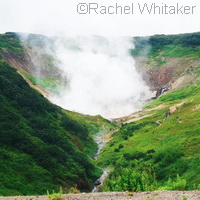Scientists shed light on sympatric speciation
Sympatric speciation, the creation of two or more descendant species from one ancestral species all occupying the same habitat, has weighed on the minds of researchers for a long time. A team of scientists from the United Kingdom and the United States provides fresh insight into the profound genetic diversity that probably occurs everywhere in wild microbial populations. The findings of the study are presented in the journal PLoS Biology. Scientists from the University of Illinois in the United States and the University of Oxford in the United Kingdom explain that proving the idea of sympatric speciation is no easy task. The problem intensifies when you take microbes into account. 'One of the big questions, from Darwin on, is how do species diverge if they are living together,' says Professor Rachel Whitaker, a senior author of the study from the University of Illinois. 'That question really hasn't been answered very well, even in the macroorganisms that we've studied for hundreds of years.' Bacteria and archaea, which are distantly related microbial cousins of bacteria, prove problematic when it comes to this kind of research because they have the capacity to share genetic information in a multitude of ways. According to the Illinois researcher, microbes want to win. In order to do this, they divide and generate exact or near-exact clones of themselves. 'If this were their only way of getting established, their genetic diversity would be quite low, the result of a few random copy errors and mutations,' she explains. 'But they also can link up with each other to pass genes back and forth, suck up random genetic elements from their environment and acquire new genes from viruses that infect them and their neighbours.' The team dissected the genetic endowment of single microbes. This helped the researchers determine what was bacteria and what was archaea. Their results put archaea in the third domain of life, clearly demonstrating that bacteria and archaea are very different. 'Every time we look, everywhere we look we see variation in microbial populations using these molecular tools,' Professor Whitaker says. 'You have to use these molecules, these DNA (deoxyribonucleic acid) sequences, to tell the difference between species.' This effort, however, is not easy. The team put Sulfolobus islandicus in the spotlight. This organism, which belongs to the archael domain of life, loves heat probably because it lives in 'island' populations produced by geothermal hot springs. 'We're looking at an environment that's not very complex in microbial terms,' Professor Whitaker comments. 'There are not that many organisms that can handle it, and the ones that can don't successfully move around very often.' They sequenced the genomes of 12 strains of S. islandicus from a single hot spring in the Mutnovsky Volcano region of Kamchatka, Russia. Their data show 2 distinct groups of S. islandicus among the 12 strains. Professor Whitaker notes how the microbes were swapping genes with members of their own group more than expected, but sharing genes with the other group less than expected. It should be noted that the swapping of genetic material between the two groups was shrinking over time. This reveals that both groups are already separate species despite the fact that they share the same habitat. While the differences between the two were minimal, it was evident that speciation was under way. 'We caught them speciating,' she says. 'They do exchange some genes - just not very many. So now we know you don't have to have a (geographic or mechanical) barrier to recombination for speciation to occur. All you have to have is selection pulling the two groups apart, which nobody knew before. There are orders of magnitude more species of microbes than we ever thought there were. And that's kind of mind-boggling.' A team from the University of California at Davis in the United States contributed to this study.For more information, please visit:PLoS Biology:http://www.plosbiology.org/home.action
Countries
United Kingdom



